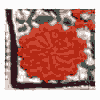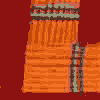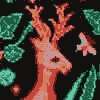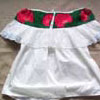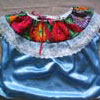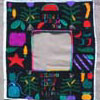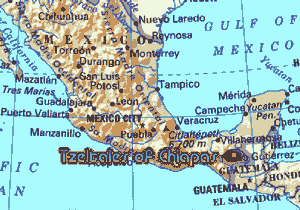 |
 |
 |
 |
Most Tzeltal families make a living by farming and raising animals. In general, the traditional lands of the Tzeltals lie at lower elevations than the lands of the Tzotzils. Therefore, in addition to the major food crops of maize, beans, squash and chiles, many Tzeltals cultivate sugar cane, coffee, and tropical fruits. Some Tzeltal families earn their living from craft production: ceramics in Amatenango, embroideries in Aguacatenango and Pamalha, and weavings in Tenejapa. Boys and men of the communities also engage in wage labor performing agricultural or construction work. Hundreds of Tzeltal families have followed the river valleys and roads into the Lacandon forest in search of land to farm.
Tzeltal communities have the same dispersed settlement pattern as Tzotzil communities - a central town with schools, shops, services, and a periodic market - surrounded by hamlets where most people live. The large Mestizo town of Ocosingo is located in the middle of Tzeltal territory and serves as the commercial and transportation center for many Tzeltal people. Each Tzeltal community has its own traditional styles of dress, which serves to distinguish people from different communities. Tzeltal women wear a costume consisting of huipil or blouse, wrap skirt, and hand-woven sash that is similar to the dress of Tzotzil women. Women in Oxchuc and Cancuc wear long huipiles that are worn outside their skirts. This differs from the style of clothing found in other Tzeltal areas, but is similar to the costume worn by Tzotzil women of Chalchihuitan. In many communities only older men and cargo-holders still wear traditional male dress.
Tzeltal religion is a blend of Catholic and highland Maya religious beliefs, and the Spanish-imposed system of religious cargos remains strong in some communities.
As among the Tzotzil people, thousands of Tzeltal families have abandoned traditional Catholicism and joined a wide variety of Protestant denominations.
Autonomous Zapatista communities are scattered throughout Tzeltal municipios. These self-governing communities reject government aid and services. At present, many Zapatista rebels, along with Sub-Comandante Marcos, occupy lands adjacent to Tzeltal territory and are quite active in the Ocosingo and Altamirano regions. For this reason, paramilitary forces have camps in some pro-government Tzeltal municipios. It is generally safe to travel the main roads through the Tzeltal region. Photographs of people should only be taken after obtaining their prior permission, and visitors to individual towns must check with local authorities before taking photographs in public spaces.
|
Home - The Collection - Favorite Photos- Bob's Top 10 - Textile Patterns - The Villages - Participate
For more information or comments please contact me at: info@mexicantextiles.com © 2005 Bob Freund All Rights Reserved |
